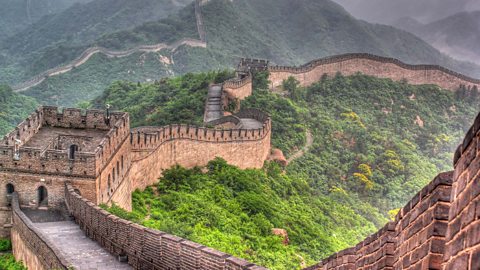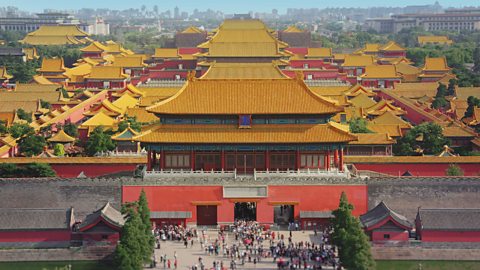Let’s take a voyage to the East as we check out China. From Beijing’s Forbidden City to the caves of Shanxi, you won’t believe what we’ll discover.
Explore China with these five unbelievable facts!
1. Some of your favourite socials are banned
Many of the well-loved social media sites you use every day such as Instagram, WhatsApp and YouTube are not allowed in China. This is because the Chinese government wants to be able to see what people are viewing and take down any videos or posts that criticise it.
However, this doesn’t mean the Chinese miss out on keeping up to date with content. China has very similar sites that its citizens can access. For example, YouTube is replaced by Youku, a website like YouTube where anybody can upload their own videos. Hundreds of thousands of people view the videos every month, and China has its very own “Youkuers”, who have been known to make millions of pounds.
And it’s not just social media that’s censored. China has been accused of an unofficial ban on K-pop. In 2023, Suga, from K-pop band BTS, spoke out on a live stream, saying he “can’t perform in China”, along with many other of the South Korean sensations. This is due to rocky relations between China and South Korea.
2. The secret ingredient holding the Great Wall of China together

Construction of the Great Wall of China started in around 220 BC, with the main wall measuring 2,150 miles (3,460 km). That’s nearly three times the length of Britain. However, all of the Great Wall's sections add up to a total of 13,171 miles (21,196 km). That’s over a tenth of the diameter of Earth!
In the thousands of years since the Great Wall’s construction, there has never been a longer wall built. The staggering structure holds to the world record for the longest wall in the world.
But would you believe that a key ingredient of what holds the Great Wall together is sticky rice? It stuck the wall’s bricks together for around 1,500 years. Over 1000 years later, experts say that sticky rice is still the best material for restoring China’s colossal construction.
3. The giant pandas in zoos are on loan from the Chinese government
The giant panda, which is vulnerable to extinction in the wild, plays a key role in attracting hundreds of thousands of visitors to zoos around the globe. But the zoos don’t own these cuddly creatures themselves - they are in fact on loan from the Chinese government.
In the 1970s, China used to give out giant pandas as gifts to manage good relations with other countries such as the USA and Japan. In 1984, the policy changed, and now the China Wildlife Conservation Association only gives out pandas as loans to zoos. The loans typically last ten years, but can be extended.

4. Millions of people in China live in caves
It might seem like something from, well, caveman times, but it's true! A few hundred miles away from Beijing’s cityscape of skyscrapers, around 3 million people in China’s Shanxi region live in caves. Features of the caves, which have housed Shanxi residents for over 5,000 years, include stone beds with a space underneath for lighting fires in the winter months.
Although 3 million people might seem like a lot, it used to be much higher. Many young people in Shanxi have been quitting the cavernous community for modern-day dwellings in recent years.

5. The Forbidden City in Beijing contains around 9,000 rooms
Once the official home of the Emperor of China, this palace in the Chinese capital is now a tourist hotspot attracting around 14 million visitors every year. The roomy residence was constructed between 1406–1420 and the total area between the palace walls is around 720,000 square metres, which is about a third of the size of the country of Monaco!
You might be wondering why the 24 emperors who lived in the Forbidden City needed so many rooms. At the end of the 18th century, 9,000 servants and other staff lived in the palace grounds to serve the emperor.
